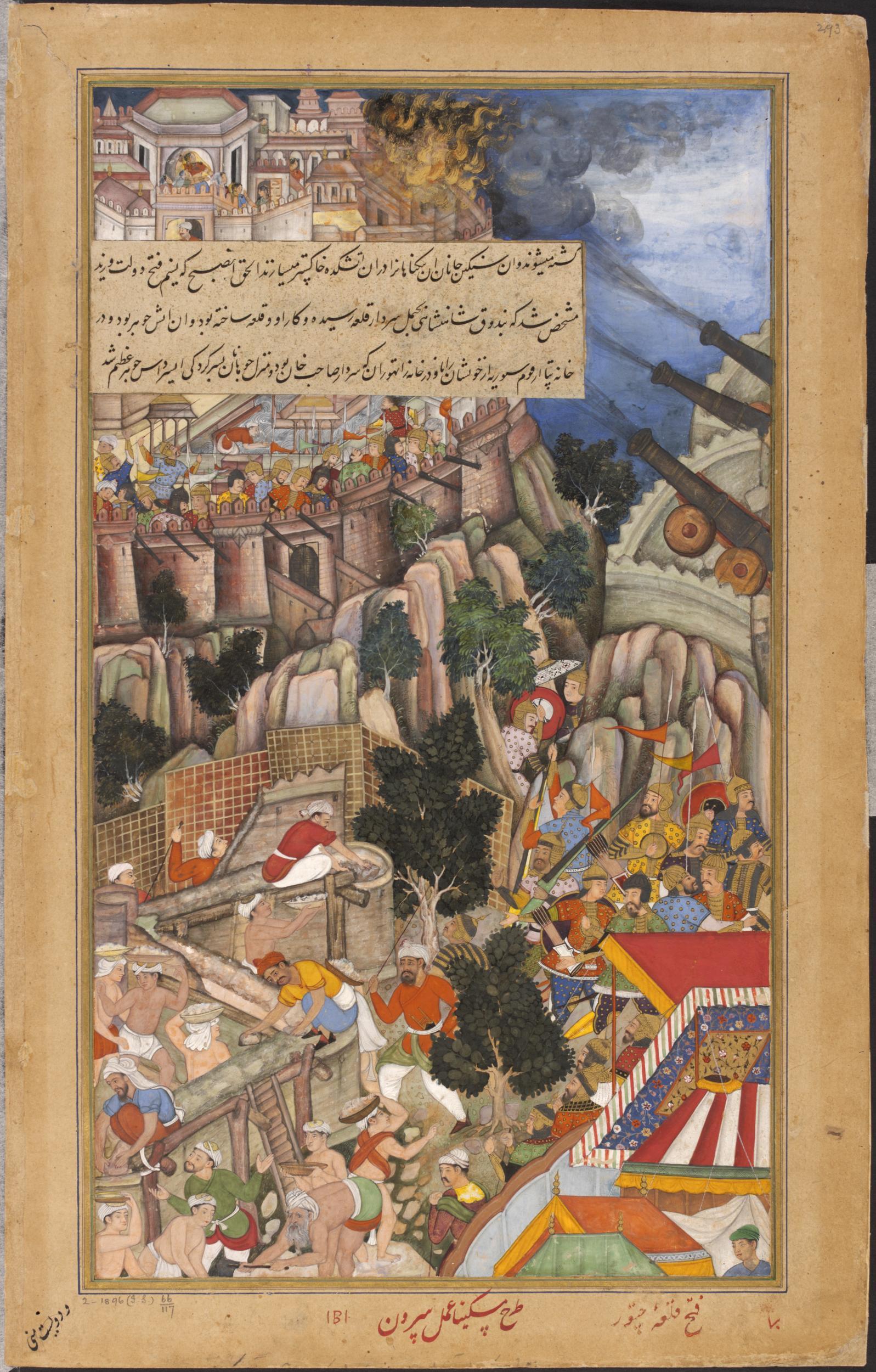

Kryski, Karly. “Essay: Siege of the Fortress in Chitor in 1567.” In The Akbarnama: A Digital Art History Student Project, April 4, 2018. .
Mewar. The Fortress of Chitor was considered to be the strongest symbol of Rajput resistance, they controlled the routes between Gujarat ports from Delhi. The Rajputs had 8,000 Rajput soldiers and 40,000 peasants to defend the fort. The Fortress of Chitor stands at the top of a 152km hill and covers 700 acres of terrain. The Fortress of Chitor was considered to be hopeless until it was taken by Alauddin Khalji of the Delhi Sultanate and then again centuries later by Bahadur Shah of th4e Gujarat Sultanate.
The Mughals were always watchful of the Rajputs. They needed to come to an understanding with the Rajputs in order to control the regions of Gujarat and its seaports as well as Malwa. Rulers Raja Bhara Mal had submitted to Akbar in 1562. But the most powerful and desirable state of Mewar and not surrendered itself to Akbar. Akbar had his eyes on the Rajasthan and kingdom of Mewar.
It depicts the accidental explosion of mines during the Mughal attack on the Rajput fortress of Chitor in 1567. Mughal sappers are shown preparing covered paths to enable the army to approach the fortress, while their opponents fiercely defend themselves. The Akbarnama was commissioned by the emperor Akbar as the official chronicle of his reign. It was written by Abu'l Fazl between 1590 and 1596 and is thought to have been illustrated between about 1592 and 1594 by at least 49 different artists from Akbar's studio. After Akbar's death in 1605, the manuscript remained in the library of his son, Jahangir (r. 1605-1627) and later that of Shah Jahan (r.1628-1658). The Museum purchased it in 1896 from Mrs Frances Clarke, the widow of Major-General John Clarke who bought it in India while serving as Commissioner of Oudh between 1858 and 1862.
The Mughals were not having success in their attempts to attack the Fortress of Chitor directly because the fort was so strongly built. The Mughals had two options, to either starve out the residents of Chitor or the reach the fort and dig underneath the walls. After many failed aggressive attempts Akbar ordered an extra 5,000 peasants to assist with reaching the wall. Akbar ordered his men to start making mines and a sabat for attacking the fort. A huge cannon was also constructed to fire at the fort after the sabats reached the wall. Fort Garrison sent Sandra Silhadar to surrender to the Mughals and agreed to a pay a yearly fee and support Akbar in court. Akbar did not care about this offer as it wasn’t his main goal, he wanted Udai Singh himself to surrender. 58 days into the siege the Mughals finally reached the walls of the Fortress of Chitor, mines were deployed and finally the walls of the fort were destroyed. The Rajputs were able to fight off the Mughals for weeks, at last in 1568 Akbar shot the Rajput leader Jaimal. Jaimals death was the turning point of the attack that lead to the Rajputs defeat. Akbar entered the Fortress of Chitor on February 23 1568n with thousands of Mughals and the Fortress was officially taken by the Mughals.
As shown in the Hadith Bayad wa Riyad manuscript, gardens were integral to Andalusian palaces. They were often separated into four quadrants, and the channels were used to irrigate the flowerbeds and orchards that made up these semi-private spaces (Ruggles 163). Beautiful gardens flourished alongside the rise in Arabic botanical science, which rested on ancient Greek foundations. Andalusia was important centre for the study of plant species and propagation, fruit tree cultivation, plant diseases, and pharmacology, making lasting contributions to Medieval science (Hitti 574-576).